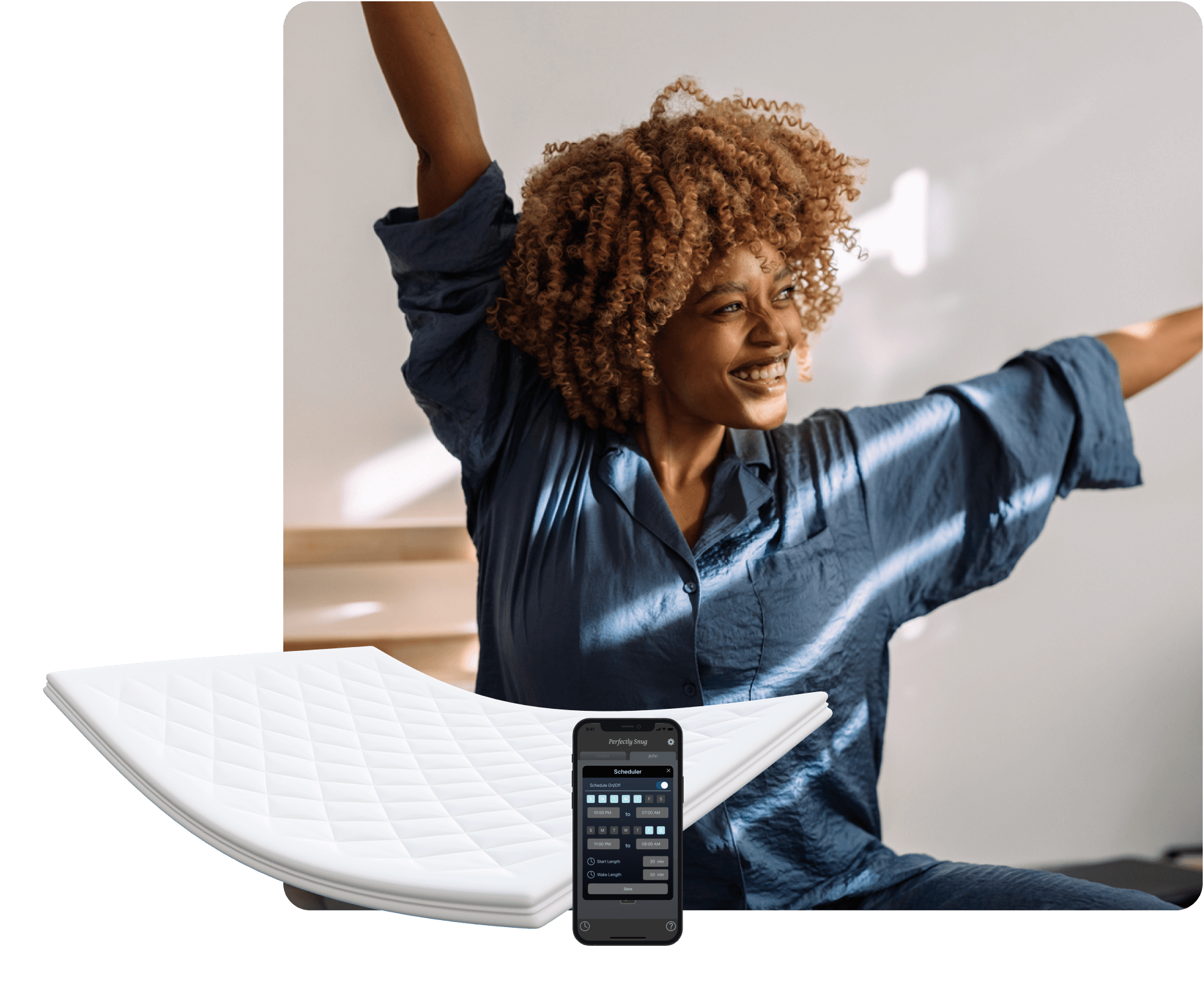Introduction
Overview of lower back pain and its impacts
Lower back pain is no laughing matter, even though it might make you groan every time you move! At Perfectly Snug, we understand that back pain can be a real pain in the... well, back. It's a common ailment that affects millions of people worldwide, impacting their daily lives and, most importantly, their sleep quality. Lower back pain can range from a dull, constant ache to a sudden, sharp sensation that leaves you incapacitated. It can result from various factors, including poor posture, injury, or underlying medical conditions. The impacts of lower back pain extend far beyond physical discomfort – it can affect your mood, productivity, and overall quality of life.The importance of sleeping positions for your back's health
When it comes to back pain relief, your sleeping position plays a crucial role. It's not just about catching those Z's; it's about how you catch them! The right sleeping posture can significantly reduce lower back pain during sleep and improve your overall back health. Think of your sleeping position as a nightly spa treatment for your spine. Just as our Smart Topper adjusts to provide the perfect sleeping temperature, finding the right sleeping position can help your back recover and rejuvenate overnight. It's time to turn your bedroom into a back pain relief center, and we're here to help you do just that!The Anatomy of Lower Back Pain
Common causes of lower back pain
Lower back pain can be as mysterious as trying to find a cool spot on your pillow on a hot summer night. But fear not! We're here to shed some light on the common culprits behind this pesky problem: Muscle or ligament strain: Repeated heavy lifting or a sudden awkward movement can strain back muscles and spinal ligaments. Bulging or ruptured disks: The soft material inside a disk can bulge or rupture and press on a nerve. Arthritis: Osteoarthritis can affect the lower back and cause pain. Skeletal irregularities: Conditions like scoliosis can lead to back pain. Osteoporosis: When your bones become porous and brittle, your spine's vertebrae can develop compression fractures. Understanding these causes is the first step in finding the right solution for back pain relief. Just as our Smart Topper is designed to address temperature-related sleep issues, identifying the root cause of your back pain can help you target the right treatment.How sleep affects lower back pain
Sleep and lower back pain have a complicated relationship – they're like two dance partners who keep stepping on each other's toes! Poor sleep can exacerbate back pain, and back pain can lead to poor sleep. It's a vicious cycle that needs to be broken. During sleep, your body goes into repair mode. It's like a nightly maintenance schedule for your muscles and tissues. When you sleep in a position that doesn't support your spine properly, you're essentially interrupting this crucial maintenance work. This can lead to increased inflammation, muscle tension, and – you guessed it – more back pain. On the flip side, when you sleep in a position that supports your spine, you're giving your back the best chance to heal and recover. It's similar to how our Smart Topper provides the ideal sleeping environment by regulating temperature – the right sleeping position creates the perfect conditions for your back to recuperate.Top 5 Sleeping Positions to Alleviate Lower Back Pain
Fetal Position
Curl up and get comfy! The fetal position isn't just for babies; it's a fantastic sleeping posture for back health. This position involves lying on your side with your knees drawn up towards your chest. The fetal position helps open up the joints in your spine, relieving pressure on your discs. It's particularly beneficial if you have a herniated disc. Think of it as giving your spine a gentle hug while you sleep! To maximize the benefits: Keep your knees bent, but not drawn up too tightly to your chest. Place a small pillow between your knees to keep your hips aligned. Alternate sides to prevent imbalances.Sleeping on Your Back with Knee Support
Attention, back sleepers! This position is your ticket to back pain relief. Sleeping on your back helps distribute your weight evenly, minimizing pressure points. To enhance this position: Place a pillow under your knees to maintain the natural curve of your lower back. Use a small, rolled towel under the small of your back for additional support. This setup is like creating a custom-fitted bed for your spine. Just as our Smart Topper adapts to your body's temperature needs, this position adapts to your spine's natural curvature.Sleeping on Your Side with a Pillow Between Your Knees
Side sleepers, rejoice! This position can be a game-changer for reducing lower back pain. When you sleep on your side without proper support, your upper leg can pull your spine out of alignment, straining your lower back. The solution? Place a pillow between your knees. This simple addition helps keep your hips, pelvis, and spine in better alignment. It's like giving your spine a set of training wheels while you sleep! For optimal comfort: Choose a pillow that's thick enough to keep your hips level. Pull your knees slightly towards your chest. Consider using a body pillow for full-body support.Flat on Your Back in a Reclined Position
If you've ever felt relief from back pain while sitting in a recliner, this position might be your new best friend. Sleeping in a reclined position can be particularly beneficial for people with isthmic spondylolisthesis, a condition where a vertebra slips over the one below it. The slight elevation of your upper body reduces pressure on your spine. It's like giving your back a mini vacation from gravity! To achieve this position: Use an adjustable bed if possible. If you don't have an adjustable bed, use a wedge pillow to prop up your upper body. Ensure your head and neck are supported to prevent strain.On Your Stomach with a Pillow Under Your Abdomen
While sleeping on your stomach is generally not recommended for back pain, we understand that old habits die hard. If you're a committed stomach sleeper, this modified position can help reduce strain on your lower back. Place a thin pillow under your abdomen and hips. This slight elevation helps keep your spine in a more neutral position, reducing the arch in your lower back. Remember: Use a very thin pillow for your head, or no pillow at all, to avoid neck strain. Consider sleeping "face-down" with a small, rolled-up towel supporting your forehead, allowing room to breathe.Additional Tips for Improving Sleep Quality and Reducing Back Pain
Choosing the Right Mattress and Pillow
Your mattress and pillow are the unsung heroes in your quest for back pain relief. A supportive mattress is crucial for maintaining proper spinal alignment. It's like having a personal chiropractor working on your back all night! When selecting a mattress: Look for a balance of comfort and support. Consider your sleeping position and body type. Remember that firmer isn't always better – the goal is to maintain your spine's natural curve. As for pillows, they're not just for your head! Strategic pillow placement can significantly enhance your sleeping posture for back health: For back sleepers: A thin pillow under your head and a supportive pillow under your knees. For side sleepers: A thicker pillow under your head and a pillow between your knees. For stomach sleepers: A very thin pillow under your head and a pillow under your hips. And let's not forget about temperature! Our Smart Topper is designed to provide the perfect sleeping temperature, which can significantly improve your sleep quality and, in turn, help manage back pain.The Role of Regular Exercise
It might be the last thing on your mind when you're dealing with back pain, but exercise is a crucial component of back pain management and better sleep. Regular physical activity helps strengthen the muscles that support your spine, improve flexibility, and enhance overall back health.
Some exercises to consider: Core strengthening exercises Low-impact aerobic activities like swimming or walking Gentle stretching routines Remember, always consult with a healthcare professional before starting any new exercise routine, especially if you're dealing with back pain.


